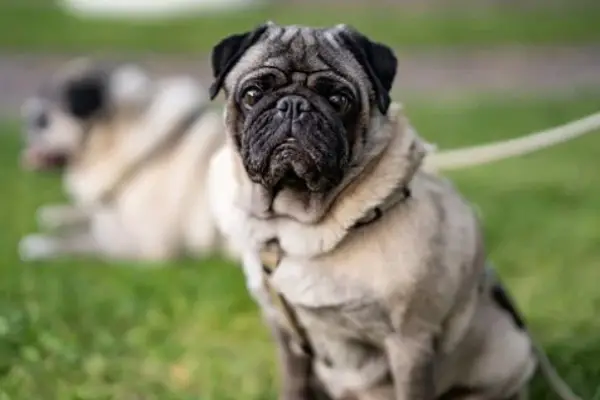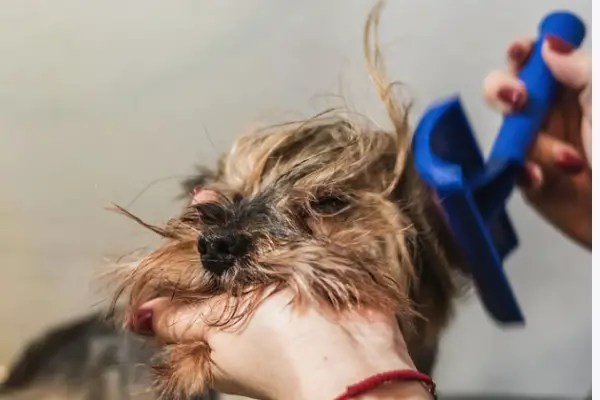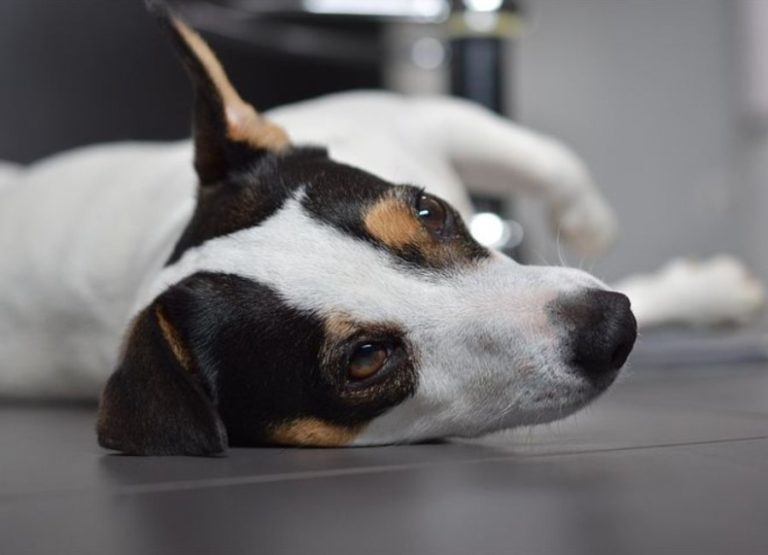How Long Do Pugs Live: 7 Factors To Consider

Smaller breeds of dogs live longer than bigger breeds of dogs, so how long do pugs live? Let’s find out together!
This is a frequently asked subject among pug owners, and I’ll go through some of the elements that affect how long a pug can live.
Many variables impact a pug’s life expectancy, some of which are beyond human control and others that can be addressed.
Let me quickly answer your question then we continue to factors to consider…
How Long Do Pugs Live
A healthy pug may expect to live for 13 to 16 years or more with frequent medical check-ups, balanced food, and basic care, all of which have an impact on how long a pug lives.
In order for your pug to have a longer life, you must participate in specific activities.
This combination of exercises, which I’ll go through at the conclusion of this essay, will help your pug live as long as possible.
Before we go any further, let’s have a look at some of the elements that determine the lifespan of pugs.
Factors that influence pug life expectancy
The following are some of the most common elements that impact a pug’s lifespan:
1. Genetics factors
Pugs, like all living beings, have inherited elements that determine their lifetime.
If the pug’s parents survive to be old, there are chances that the puppy will undoubtedly live to be old as well.
Diseases like heart disease and asthma, as well as genetics, can unfortunately be passed down to puppies, which is why you should get your pug from a reputable breeder.
These disorders, which are handed down from parents to their offspring, have a substantial impact on a pug’s lifetime.
This is why we recommend purchasing or adopting a pug from a reputable breeder as well as getting medical check-ups for your pug.
2. Hormonal imbalances
A neutered pug is more likely to have a long and healthy life, which may lead to a longer lifespan.
Because a non-neutered pug has greater hormonal fluctuations than a neutered pug, this is accurate and will affect the overall life span of a pug.
The reproductive needs of a pug are met by neutering them, which eliminates any issues associated with reproduction that might shorten their lifespan.
3. Health issues
Pugs are known to suffer from a variety of health problems, the majority of which lead them to live shorter lives.
Progressive retinal degeneration, urinary tract infections, polycystic kidney disease, and other diseases are among the most common health issues.
This breed is prone to gastrointestinal and cancer issues, as well as urinary tract infections and gum disease.
4. Lack of medical check-ups
Pugs are unable to communicate when they are unwell. Pugs, on the other hand, are notorious for hiding their unpleasant emotions.
When a pug owner notices something is wrong with their dog, it is sometimes too late to help them.
Pugs, in particular, require frequent visits to the veterinarian.
This increases your chances of spotting problems early enough to adequately handle them.
Ensure that your pug has had all of his or her immunizations.
Make yearly checkups for your pet a top priority.
This assists in the early detection of potential issues as well as the provision of preventative therapy.
Read more: Common Pug Dying Symptoms & Ways To Comfort Them
5. High levels of stress and anxiety
Stress, despair, and anxiety can shorten the lifespan of pugs, especially those that suffer from separation anxiety.
Loud sounds, other animals, humans they dislike, and a range of other factors can all contribute to their behavior.
While you won’t be able to take your pug to fully stress-free locations, you can educate them on how to manage anxiety.
Give them toys, make sure they get adequate sleep and be present in circumstances when they could feel threatened.
When pugs are happy or peaceful, positive hormones are released, and these hormones help pugs live longer.
6. Environmental conditions
Pugs roaming the streets are at more risk than pugs living in a healthy and clean environment.
There are several reasons why you should never leave your pug unsupervised outside.
Traffic accidents, pollution, parasites, infections, and animal assaults all have an impact on how long they live.
Allowing your pug to spend too much time outdoors without supervision might put him or her in danger.
They might be bitten by dogs or other animals, ingest poison or suffer from various illnesses that shorten their lives.
7. Wrong type of nutrition
If a pug is fed a bad diet, his or her lifespan is dramatically reduced.
As a result, we strongly advise you to speak with your veterinarian so that you can receive the right nutrition.
It’s crucial to note that the food you give your pug pups is different from the diet you feed an adult or senior pug.
Every stage of life necessitates the usage of a certain meal, which a veterinarian should prescribe.
In actuality, a poor diet causes pugs to develop health problems, which may cause their lives to be cut short.
Read more: Most Common Pug Sick Symptoms You Should Know.
How to prolong pug life expectancy
Here are some typical methods for extending the life of a pug:
1. Provide high-quality meals
Providing high-quality food to pugs is a simple method to assist them in living longer lives.
Inadequate nutrition is one of the leading causes of health problems in dogs, therefore feeding your pug nutritious food is essential.
Ascertain that they eat a diet high in protein, vitamins, and minerals.
You may always see your veterinarian for guidance on the finest diet for you, regardless of your age.
Your pug can eat both dry and wet food since they are both nutritious.
2. Regular medical check-ups
Make sure your pug received all of the essential shots and was up to date when you first acquired him.
Make yearly checkups for your pet a top priority. This assists in the early detection of potential issues as well as the provision of preventative therapy.
Taking your pug to the veterinarian for frequent checks is the greatest way to be informed about her health.
Regular medical exams will aid in the early diagnosis of any possible health problems, allowing your pug to live a longer and healthier life.
3. Provide a dog-friendly environment
The environment in which your pug lives has a big impact on the diseases he gets.
Pests or worms that are damaging to your pug’s health may be passed on if you keep an unsanitary environment.
Infected mosquito bites, for example, can give your pug worms, and this bug can breed on stalled or potted water logs near your home.
To help your pug live a longer life by providing a healthy and clean environment as well as good hygiene habits.
4. Avoid some human foods
Pugs are fed from their owners’ dishes without their awareness on a daily basis.
While this is a kind gesture, not all foods are suitable for your pug.
Excessive human food consumption may cause gastrointestinal issues in your pug, shortening its lifespan.
Follow a skilled veterinarian’s feeding recommendations to the letter.
Regular grooming and well-balanced food are essential for your pug.
If you realize your pug has a health problem, take care of it right away.
5. Always keep your pug hydrated
Dehydration can reduce the lifespan of your pug by generating health issues that can be avoided.
Make sure you keep your pug hydrated all the time.
Place clean water where your pug can see it to ensure that he or she has access to it.
Dehydration can cause shedding, damage to internal organs, and dry skin, all of which are avoidable health problems.
6. Keep your pug away from stress and anxiety
Pugs are loyal pets who like spending time with their owners. Make sure you provide a stress-free environment for your pug.
When a pug is left alone for a lengthy amount of time, he or she may get depressed or anxious.
Your pug’s life may be cut short as a result of stress and anxiety.
As a result, by following some simple actions, you may be able to extend your pug’s life.
To keep your pug happy and active, remember to love and care for them.
You may help your pug live longer by providing adequate care and attention.
7. Provide mental stimulation
If your pug eats a well-balanced food, exercises frequently, and has enough cerebral stimulation, he or she will live longer.
Pugs’ heart muscles pump more efficiently when they are active on a daily basis.
Pugs benefit from exercise because it reduces stress, increases endorphins, and helps them manage their emotions.
How do I know if my pug is dying?
Reduced mobility, changes in behavior, significant weight loss, lower respiratory rate, lack of interest in anything, loss of food, and finally increased self-isolation are the most common signs that your pug is dying.
What is the main cause of death in pugs?
Pugs are a generally healthy dog breed that lives longer than many other breeds, however, they are prone to a variety of health problems, including:
- Cancer
- Hypoglycemia
- Respiratory Issues
- Leptospirosis
- Parvovirus






![Fear Aggression in Dogs [Signs, Causes & More] Fear Aggression in Dogs](https://petcreeks.com/wp-content/uploads/2023/10/barking-1819740_640.jpg)